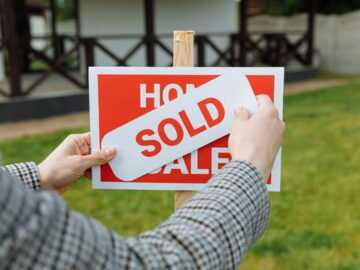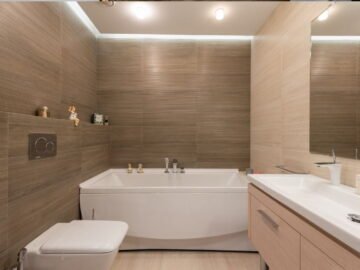Increase Your Home’s Value with Energy Efficiency Upgrades!
Increase Your Home’s Value with Energy Efficiency Upgrades!
Sustainability and Energy Efficiency
Advertising professionals will tell you that buyers are not looking to purchase ¾ inch drill bits; they want to buy ¾ inch holes. In other words, consumers, including home buyers, aren’t interested in the features of a product; they want results (benefits). The demand for results includes people wanting environmentally sustainable products and homes with energy efficiency features.
Sustainability has been a priority for most American home buyers for the past three decades, and the trend is unlikely to stop any soon. An estimated 4.7 million Americans have shifted to remote working occasioned by the COVID-19 pandemic. If you are one of them, you may have observed an unanticipated increase in your energy costs as your power consumption at home has increased.
Now that remote working is becoming the norm, demands for homes with energy efficiency features are growing. If you are working from home, you want to minimize your utility bills at home. Thankfully, emerging technologies hitting the American market have ensured that home buyers can look for energy-saving features in all budget ranges.
How Americans Feel About Energy Efficiency Homes
Energy efficiency has continued to be among the top priorities for homeowners, and almost every home seller or builder wants to join the bandwagon. An energy-efficient home will help the owner save on energy bills, increase comfort, increase resale value, and reduce environmental pollution.
According to a study by Deloitte Resource, as high as 7 in 10 Americans believe humans are the cause of climatic change and are concerned about the conservation of the earth’s resources. The research further reveals that 82% of Americans take measures to lower their electric bills in any given year, and 2 in 3 of them are making efforts to reduce their electric expenses even further. Looking forward, 9 in 10 Americans expect to restrict their electricity usage, or at best, maintain the same consumption level as in the preceding year.
According to Forbes, a homebuyer wants— and is ready to pay a premium for a home with energy-saving features such as energy-efficient appliances and windows, among other related things, together with characteristics that guarantee better air quality. In fact, according to Dodge Data & Analytics, the current growing trend of designing and building energy-efficient housing is expected to increase; and UNESCAP states that the trend towards energy efficiency will continue for the next 30 to 40 years.
Ways of Making a Home Energy Efficient
Energy Star Appliances
Home appliances consume 15% of the energy in your home. Fortunately, most Energy Star certified home appliances sold in the American market are designed to be energy efficient. While Energy Star appliances often come at a higher price than their traditional counterparts, they can lower your home bills significantly and help preserve the environment.
However, the amount of money your will save will depend on the efficiency of the appliance you are looking to replace, the features of the new appliances, and your usage. The extra cost for an energy-efficient appliance can often be offset by rebates available through your local utility company or government incentives that promote the purchase of energy-saving items.
For example, while a certified Energy Star electric clothes dryer can cost between $649-$1,399, the energy efficiency of an Energy Star rated dryer could save up to $245 in electricity usage over the life of the machine. When replacing an appliance compare the current appliance’s kilowatt-hour energy consumption to your new one and decide accordingly. If unsure how to do the calculations, the appliance manufacturer or your local utility company website may have tools for calculating the energy savings.

Enhance Insulation
EPA (Environmental Protection Agency) estimates that you can save 15% averagely on cooling and heating expenses (or roughly 11% on total home-energy costs) through air-sealing your home by adding insulation in:
- attics/loft
- floors over crawl spaces, and
- any open basement rim joist.
Improving your home’s insulation and air-sealing is one of the cheapest ways to save some energy (and money) in your home.

Install Ultra-Energy-Efficient Windows
Having big windows that overlook the scenery is a great feature of many homes but old windows are one of the largest sources of energy loss. Replacing your old drafty windows with ultra-efficient new ones can cost you between $8,000 – $24,000 but Energy Star estimated that energy-efficient certified skylights, windows, and doors can lower your home energy costs by up to 15%. In accordance with the 2016 Remodeling’s Cost vs. Value Survey, the average cost to replace a home’s existing windows with energy-efficient vinyl-clad windows will cost $14,725 and increase the value of your home by $ 10,794.
When you combine the long-term energy savings, increase in resale value, the potential to get rebates from your local utility, and government tax incentives, many homeowners will recover 100% of the cost to replace their old windows with energy-efficient new windows.
Energy Saving Water Heaters

The average lifespan of a water heater is between 10 to 15 years. If your water heater is near the end of its life expectancy, you should consider replacing it with a high-energy efficient model. Depending on the energy efficiency of your current water heater, the energy efficiency of a new energy-efficient water heater could pay for the new water heater in a few years.
An Energy Star certified water heater has a 7% to10% higher energy efficiency, meaning you might see a $25 to $30 yearly savings, or more, depending on your usage.
High-Efficiency Air Conditioning and Heating
Your air conditioning and heating units can account for more than 40% of your home energy expense. While HVAC systems will cost thousands of dollars to replace (price vary depending on size and brand), Energy Star estimates that replacing your conventional central air conditioning system with an energy-efficient one can cut your cooling bills by 30%.
If replacement of your system is not an option, you should have your system tuned up regularly so it is operating properly and consider having your ducts inspected for leaks. Your ducts could be leaking, blocked, worn out, or damaged and may require an upgrade. A leaking or damaged duct can be a significant energy waster in your home but repairs are typically inexpensive compared to the loss in energy.

Led Lighting

More than 6 in 10 Americans looking to buy homes want smart LED lighting in their future home. The newer LED lighting systems come in a variety of styles, colors, and features and use less than 25% of the energy compared to typical incandescent light bulbs. The cost is higher but can be more cost-efficient in the long run as they have a lifespan 25 times longer than a typical bulb. Besides less energy being consumed, LED lighting doesn’t produce a lot of heat, hence reducing your climate control bills.
When upgrading your lighting, don’t forget the exterior of your home. Buyers love exteriors that are well-lit and energy-efficient. Thus, you can also increase your home’s value with energy-efficient upgrades installed on the outside. Equip your home with things such as LED motion sensors lights, LED accent lighting, and exterior LED security lighting. When it comes time to sell, you can emphasize that your property is energy efficient both inside and outside and the exterior LED security lighting makes your home safer than other properties in your area.
Solar Energy
According to Berkeley National Laboratory, you can increase the value of your home by roughly $ 15,000 by installing solar power. One of the main reasons most Americans are looking to install solar panels is that they offer predictable energy savings. While utility rates often fluctuate sharply each month, the cost to produce solar power remains static over time.
According to EnergySage, a solar panel system costs $12,500 on average. The estimated energy savings over 20 years can amount to $17,985 in Philadelphia and about double ($39,452) in Seattle. What you can save will largely depend on where you live.
Moreover, 80% of homeowners favor solar energy on ethical grounds, as it one of the most environmentally friendly energy sources. People actively see the importance of green energy, and for each kilowatt-hour of energy the sun produces, it represents an important step towards environmental conservation.

Low Flow Water Devices and Fixtures

Installing low-flow water devices and fixtures is another excellent way to make your home energy efficient. These water-saving devices include faucets, lavatories, showerheads, and urinals.
Compared to conventional fixtures, low-flow water conservation devices and fixtures can reduce your water consumption by more than 20%. It translates into significant savings in water and sewage expenses as well as reducing the energy for water heating needs.
Automated Control Systems
Most homeowners and buyers find automated lighting, temperature, and security control systems appealing as they are adaptable. It allows you to pick which smart devices you want to install into your property. It enables you to connect thermostats, shades, lightings, key locks, among other devices, and control them directly from your computer, tablet, or smartphone. These systems can be customized to what you want.
Most automated light and temperature systems feature advanced presets and scheduling, allowing you to slash some dollars off your electricity expenses. For example, with a smart thermostat, you can preset the time for the cooling or heating to turn off or on or set a specific predetermined temperature.
Nowadays, from your tablet, laptop, or smartphone, you can access:
- Window locks or door
- Doorbells
- Security cameras
Automated light and temperature and security control systems reduce bills, increase your quality of life, and improves your home’s security. These systems are quickly becoming a “must-have” for home buyers.
The Right Choice
Identifying the right home renovations and fixes that add value to the property is not an exact science. Besides, there’s no one-size-fits-all option. Nevertheless, if you choose to increase your home’s value with energy-efficient upgrades, the return on investment can be tremendous.
Not only can an energy-efficient improvement offer significant dollar savings, but it also increases your home’s attractiveness while affording you the ethical peace of mind of environmental conservation. Today’s home buyers are concerned about the environment and are seeking energy-efficient homes. They are willing to pay a premium for a home that is energy efficient and environmentally friendly.
Brought to You by OutFactors
This information is provided by OutFactors, a home cash buyer. At OutFactors, we buy houses as-is for cash and close quickly. To get a cash offer on your home you just enter your address and answer a few simple questions about the house. The entire process only takes about 2 minutes and personal information is NOT required. Yes, that is correct! No email address, no telephone number, not even your name. If you like the offer, great, your home is sold. If not, just “X” out and go enjoy the rest of your day. To get a great cash offer click here!
For those who prefer a personal touch, we invite you to call us at 800-420-7030 to speak with our friendly and helpful customer advocates. We are here to help!
OutFactors
539 West Commerce Street
Suite 1205
Dallas, Texas 75208
Contact@OutFactors.com
(800) 420-7030
Increase Home Value | Energy Efficiency Upgrades | OutFactors – Dallas Fort Worth, Texas




